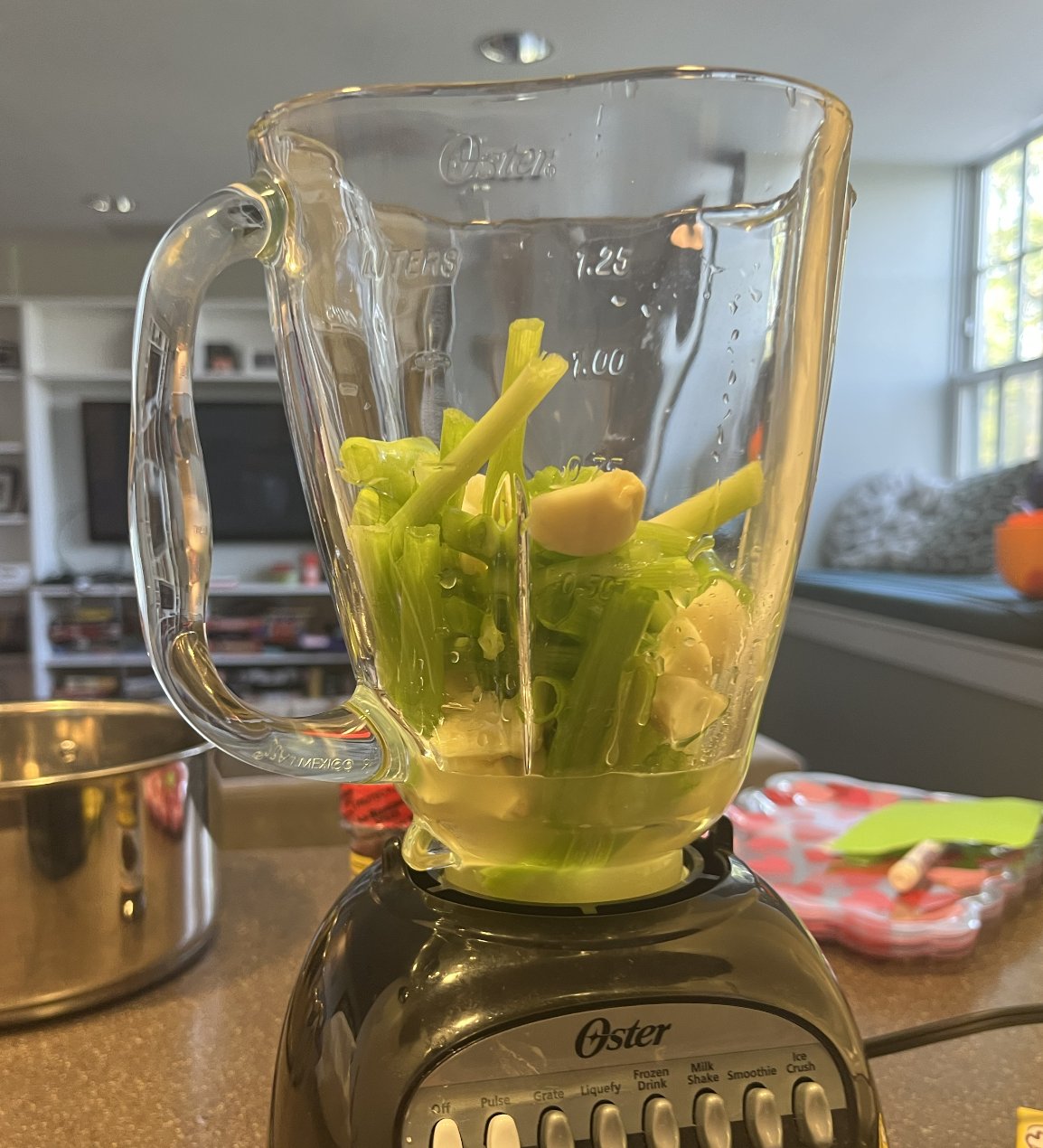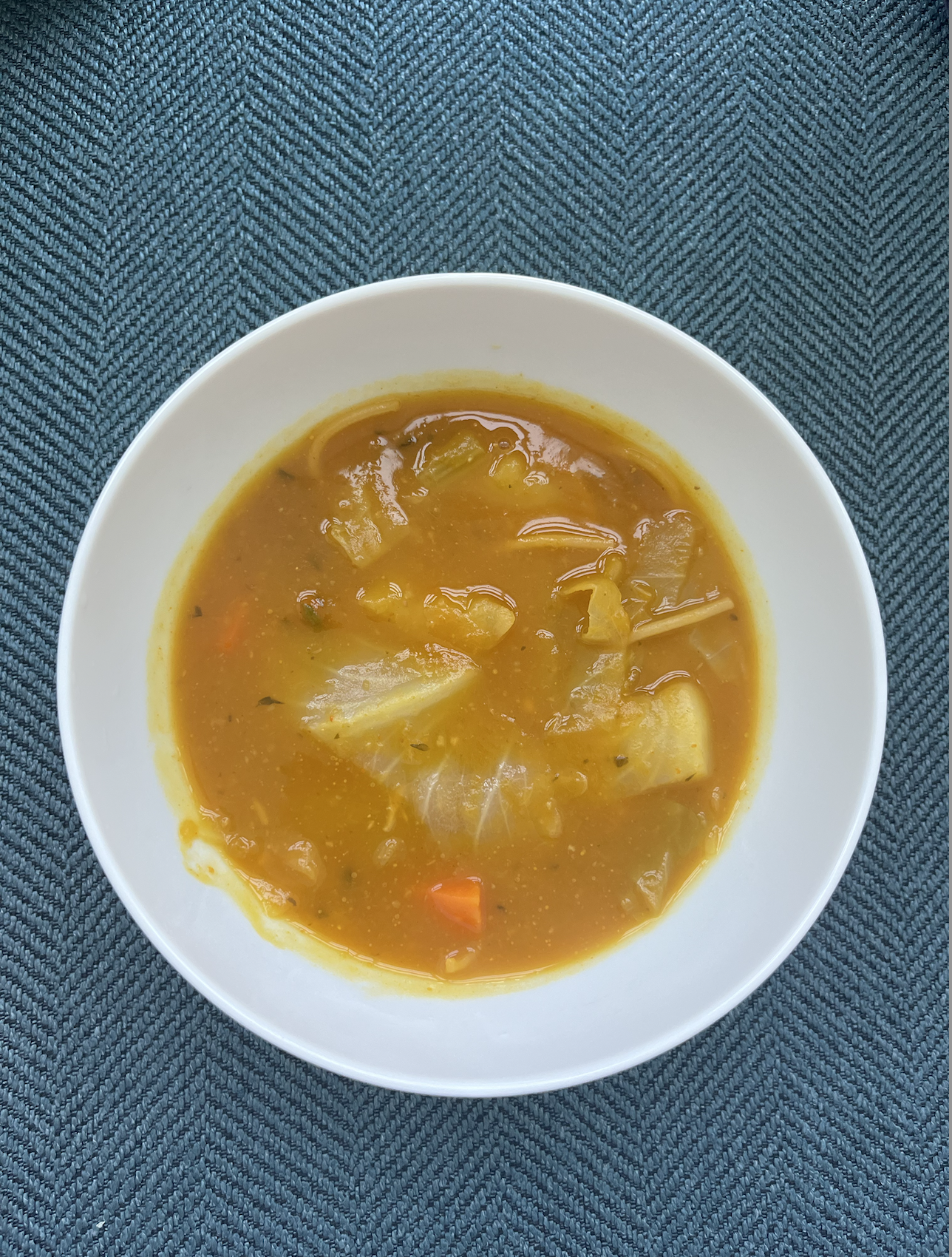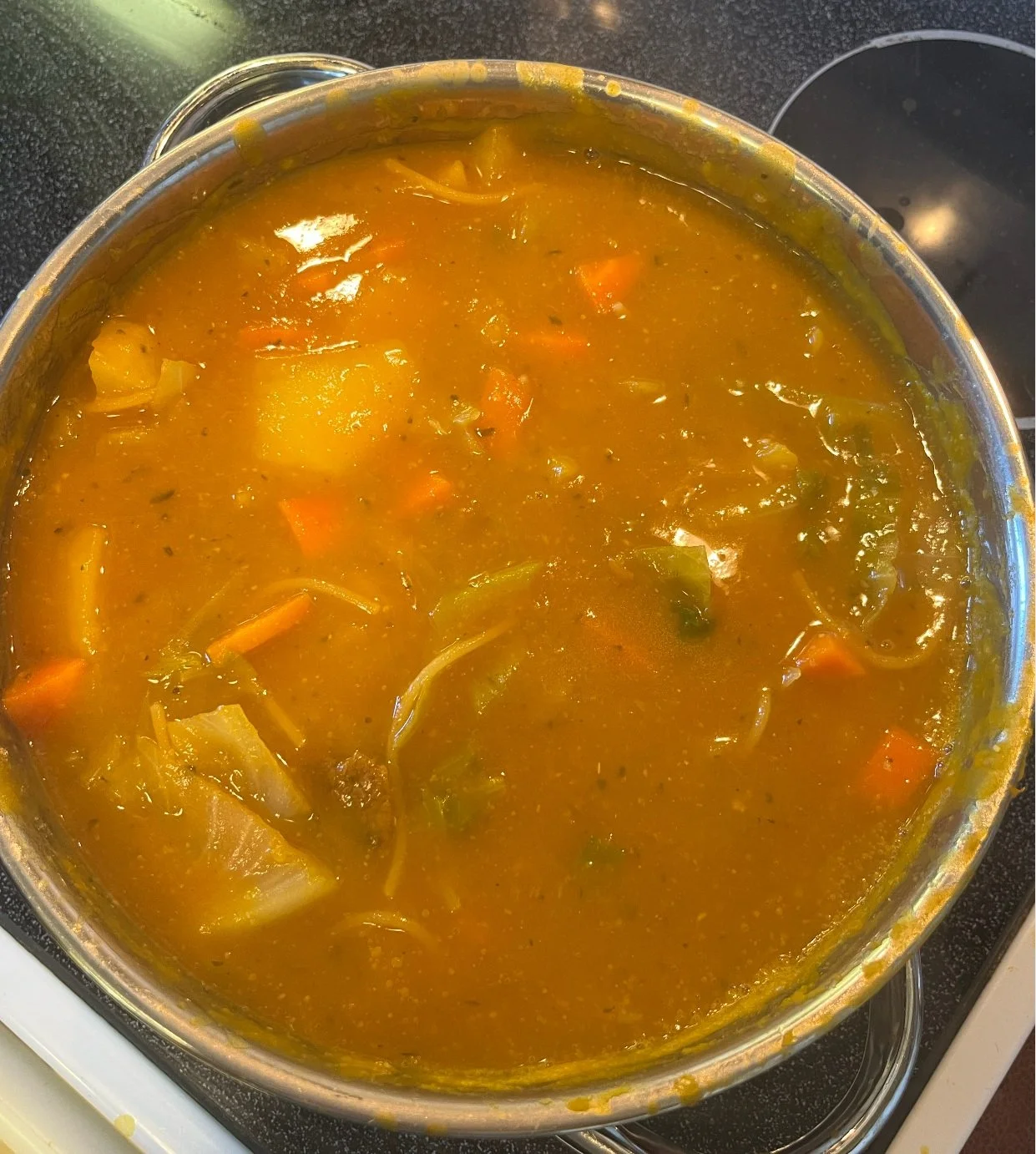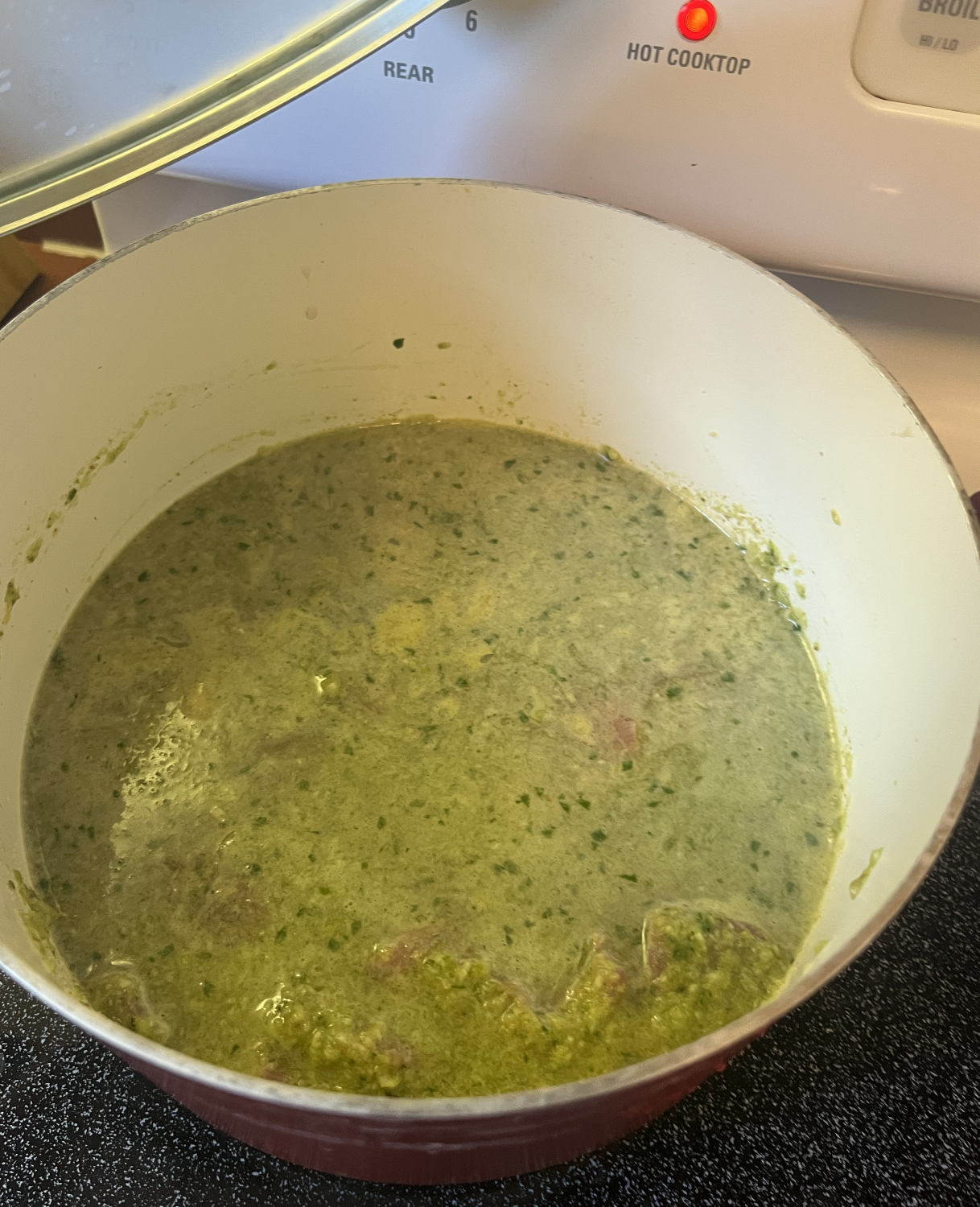Marie’s
Soup Joumou
After interviewing Edie, who lives at the Simon C. Fireman Retirement Community, I found myself searching for an original recipe for Haitian squash soup, or soup joumou—Edie had forgotten all about it. So I approached the Haitian staff at my school’s dining hall to ask if any of them knew how to make it. Every person I met said the same thing: “Talk to Marie! She’s the best at it.”
Marie Juliet Rejoice came to America in April of 1993, then thirty-three years old. Leaving her family behind, she left Haiti to escape the political situation and to keep her husband safe. Now, she has worked at Milton Academy for almost three decades.
Soup joumou, she explains, is a powerful part of Haitian identity. During the colonial era of then-Saint-Domingue, Haitians were made to cultivate squash (the central ingredient of soup joumou) on plantations. They then prepared, cooked, and served the dish to enslavers and colonizers, but were banned from eating it themselves. The dish became, in effect, living proof of superiority and white supremacy. After the nearly-13-year-long Haitian Revolution, however, Haitians reclaimed their liberation by eating soup joumou.
“We eat soup joumou to celebrate independence,” she told me, recalling memories of learning to cook the soup as a child. “For our freedom.” On January 1, Haiti’s Independence Day, soup joumou is eaten as the first meal of the year. Preparing soup joumou is a group activity, she told me, one meant to bring communities together. Every family’s recipe is different, but the emotions behind it remain the same. So long after she left her hometown, Marie still makes soup joumou on Independence Day, a reminder of where she came from.
And she offered to teach me how to make it herself. “Need to make sure you know how to do it properly,” she said, patting my arm. So on a Saturday morning, she came to my dorm and we cooked together. Later that day, we brought some soup over to the other dining hall workers—and then, Marie gave me a Haitian flag before she left. This is her recipe. (also, see photos below!)
INGREDIENTS
Around 2 pounds beef, cut into medium-sized chunks
2-3 limes, halved.
One bunch scallions, cut into generous pieces,
6-7 garlic cloves, halved and peeled
A handful fresh parsley
3 cubes beef bouillon
lemon juice
——
2.5-3 packs of frozen calabaza squash (we used La Fe brand)
One large carrot, cut into coin-size pieces.
2 potatoes, peeled and cut into large chunks.
A handful of thyme
1 packet Sazón seasoning
Five dried cloves
One handful spaghetti
Half a head of cabbage, washed, cut in half and then in lengthwise slices/shreds
Epis, before blending.
Soup in the pot
let’s cook!
Cut the beef into medium-sized chunks and rinse with lukewarm water.
Rinse limes and squeeze juice into a bowl
Put the squeezed lime halves in and mix with the beef, adding a little water to cover the beef. Massage until coated.
Then, toss the limes and drain the water, let sit.
Cut the scallion tops off and cut scallions into generous pieces
Put the halved garlic cloves, the scallions, the reserved lime juice, a generous splash of lemon juice, and the parsley in a blender. Add the beef bouillon cubes and a little water and blend until smooth. This is your épis seasoning, a staple that’s used to flavor many Haitian dishes.
Put the epis on the stove on high heat for about 30mins with the marinated beef chunks and a handful of thyme
In a very large stock pot on medium-high heat, defrost the squash. Cook, stirring to break up the chunks.
When the squash is hot and smooth, add the potatoes, cabbage, and carrots into the pot.
Let sit, then add the sazón seasoning.
As the epis-beef liquid reduces, add a few ladlefuls to the squash to flavour it along with five dried cloves. Taste and adjust.
Add the beef to the squash when it becomes tender.
Break a handful of spaghetti into pieces and add to the soup.
Epis and beef
The essential ingredient
Marie in the kitchen of my dorm.
Marinating beef and lime






